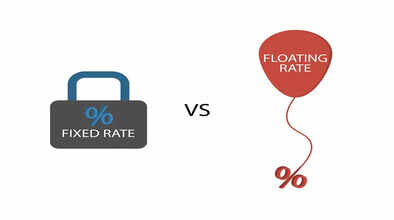Fixed vs Floating Rate: Understand the difference between the two before taking a home loan..

Everyone dreams of having their own house. Home loan plays an important role in realizing this dream. You can fulfill this dream through a home loan. Whenever you go to a bank or financial institution to take a loan, you have to select one option from Fixed Rate and Floating Rate.
Which of these options should we select for paying interest on the home loan? We should make a decision only after knowing the advantages and disadvantages of both of them. In this article, we will tell you about the advantages and disadvantages along with the difference between these two (Fixed vs Floating Rate).
Fixed Rate
A fixed rate means that the interest rate will remain the same for the entire tenure of the loan. There will be no change in the interest rate. Apart from this, EMI will also not change.
Understand it like this, if you have taken a home loan at the rate of 8.20 percent for 30 years in which the monthly EMI is Rs 22,000. In such a situation, you will have to pay an EMI of Rs 22,000 per month for 30 years, that is, there will be no change in EMI for 30 years.
You have to keep one thing in mind many banks convert the fixed rate to a floating rate after some time. You should first confirm the things related to this before taking a home loan.
Floating Rate
The interest rate keeps changing in the floating rate. In this, the interest rate is aligned with the benchmark rates of the bank. In such a situation, whenever the Reserve Bank of India (RBI) makes any change in the Repo Rate, then the interest rates of the home loan change. With the change in interest rates, the EMI also changes. If the interest rate increases but you do not want to increase the EMI, then the loan period increases.
What are the advantages and disadvantages?
At a fixed rate, the loan EMI remains fixed, which does not affect your money flow for a long time.
In floating rate, the loan EMI can also increase due to an increase in interest rate. This affects your savings and budget.
In floating rates, problems may arise due to an increase in loan tenure or an increase in EMI. Whereas in fixed rate, this has no effect. However, even if the benchmark rate falls, its benefit is not available.

